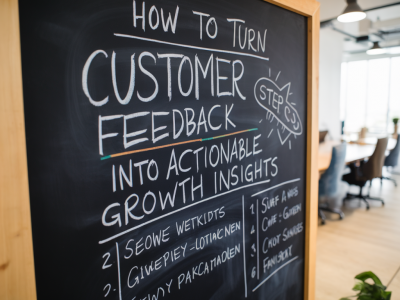
As businesses, we live in a world driven by logic, numbers, and efficiency. Especially in the realm of B2B, where decisions often revolve around data and ROI, emotional connections can feel out of place. Yet, let me share a secret with you: storytelling—a skill we often associate with novels or movies—has the potential to transform B2B branding in ways you'd never expect. And this isn't just marketing fluff; it's rooted in years of psychological research and real-world success stories.
Why Does Storytelling Matter in B2B Branding?
When we think about B2C brands, we often connect with their stories—Nike’s “Just Do It” speaks to the perseverance in all of us, and Apple’s narrative of challenging the status quo resonates with innovators worldwide. But why wouldn't this apply to B2B as well? After all, behind every business decision is a human being—someone who thrives on connection, who remembers a great story, and who wants to feel understood.
Storytelling in B2B branding matters because it does something powerful: it humanizes your brand. Whether you're a SaaS provider, a consulting firm, or a logistics partner, your audience doesn't just want to know about your features and cost savings. They want to know about the problem you solve, the lives you’ve impacted, and the vision that drives you. Storytelling creates that emotional connection, making your brand memorable and relatable.
How Storytelling Creates Impact: The Science Behind It
Let’s dive into the neuroscience of why storytelling works. Studies have shown that when we hear a compelling story, our brains produce oxytocin—the same chemical that builds trust and empathy between people. When your story resonates with your target audience, they’re more likely to trust your brand and feel connected to it.
Not only does storytelling appeal to emotions, but it also improves memory retention. Think about it: would you remember a list of company achievements on a slide deck, or the journey of how a small startup saved another business millions through creative problem-solving? When you anchor your brand in a specific, relatable, and engaging narrative, you’ll stay top of mind when it matters most.
The Elements of a Great B2B Brand Story
So, what makes a B2B story stand out? While there’s no one-size-fits-all approach, the following key elements can elevate your storytelling:
- Authenticity: Your audience can detect inauthenticity in an instant. Share real challenges and victories, not just polished successes.
- A Problem-Solution Structure: Every great story has a conflict. What obstacles did your clients face? How did your company step in to resolve them?
- Human Faces: Share the perspectives of the people behind your business. Whether it’s your team members or your customers, showcasing real stories makes your brand relatable.
- Vision and Values: Don’t just explain what you do; explain why you do it. What’s the bigger mission or change your company is working toward?
Examples of Brands Leveraging Storytelling in B2B
To further illustrate the power of storytelling in B2B branding, let’s look at some successful examples:
- Slack: Slack’s brand videos don’t just showcase its features; they share narratives of how teams across industries have transformed their collaboration processes thanks to their platform. Their storytelling focuses on what really matters to their customers—productivity, creativity, and efficiency.
- IBM: In their “IBM Watson” campaign, the company told stories of how AI powered by IBM transformed various industries, from healthcare to logistics. The campaign highlighted individual case studies and real-life applications, making the technology accessible and inspiring.
- Mailchimp: Rather than drowning its audience with features and stats, Mailchimp has mastered campaigns that tell stories of small businesses thriving through better communication. Their narratives speak directly to their users’ aspirations and challenges.
These brands succeed because they recognize that branding is about more than their offerings. It’s about the people who benefit from what they do.
Practical Strategies for Integrating Storytelling
You don’t need to overhaul your branding overnight to incorporate storytelling. Here are actionable ways you can start leveraging stories today:
- Customer Success Stories: A classic but effective approach. Highlight a specific client, their challenges, and the role you played in their success. Use quotes, images, or even videos for added authenticity.
- Behind-the-Scenes Content: Share the journey of your company—your highs, struggles, and lessons learned. For example, discuss how you developed your latest product or navigated a specific challenge in your industry.
- Create Content with a Narrative Arc: Whether you’re writing an article, designing a presentation, or building a webpage, shape your message as a narrative rather than a list of information. Start with a relatable problem, introduce your solution, and end with the impact.
- Employ Diverse Formats: Storytelling doesn't have to be limited to blog posts. Use videos, infographics, case studies, or even social media to tell your brand’s story.
- Leverage Emotional Touchpoints: Instead of focusing solely on technical benefits, tap into the emotional outcomes your audience craves—relief, security, excitement, or trust.
B2B Storytelling in the Digital Age
Modern technology has given us unprecedented tools to amplify our stories. Interactive videos, tailored email campaigns, and even AI-driven content personalization allow brands to create narratives that resonate with unique audiences. Moreover, platforms like LinkedIn and YouTube provide spaces where B2B brands can share meaningful stories and engage directly with their audience.
But remember, the medium is only as effective as the message. At the core of your storytelling strategy must lie sincerity and value for the reader or listener. It’s not enough to simply share a story; it needs to align with the goals and interests of your audience.

